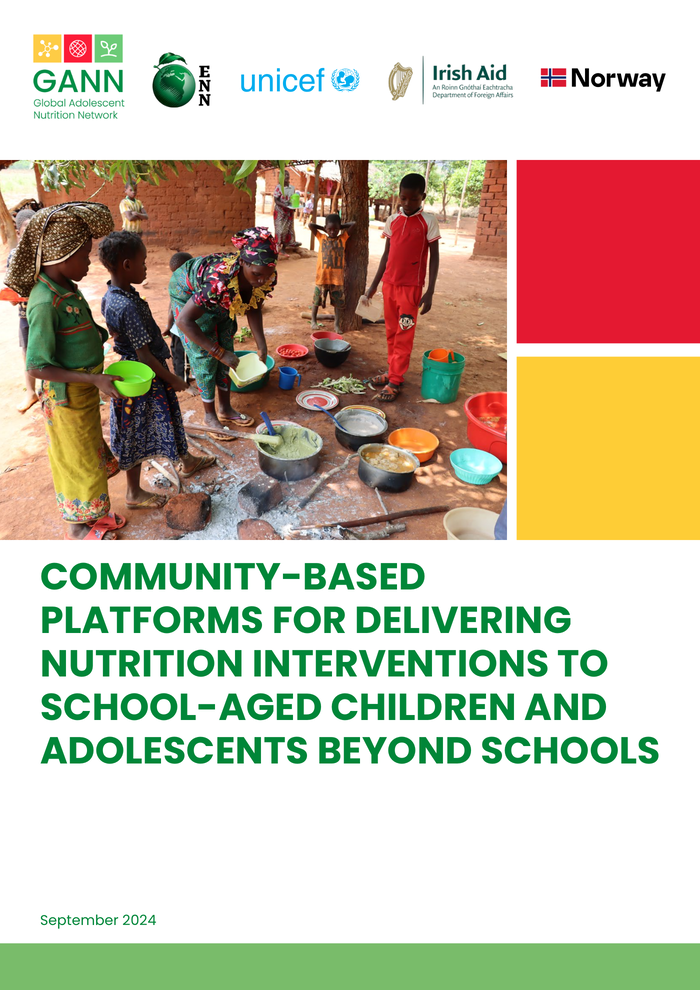Nutrition during adolescence and middle childhood is critical as it is a period of significant physiological, social, and cognitive development. Despite the global recommendation and widespread implementation of school meal programs, which serve as massive social safety nets for this age group, the quality and global coverage of these programs are not ensured. Furthermore, the presence of hindrances like lack of inclusive education and high opportunity costs prevent a significant number of children and adolescents from attending school and, consequently, benefiting from these programs. This underscores the need for the existence of alternative effective delivery platforms for nutrition services.
According to the 2023 Global Education Monitoring Report, there were 250 million children and adolescents who were not attending school in 2022. The report highlighted a significant drop-off in school completion rates as age increases, with nearly 90% completing primary education dropping to around 60% in secondary education. This implies that older children and adolescents are especially deprived of these services. Sub-Saharan Africa and Central and Southern Asia represent a significant portion of the global out-of-school population, with 30% and 20% respectively. These out-of-school children are often marginalized from the health system and tend to live in poor resource settings, making them particularly susceptible to malnutrition.
The disparities in school attendance between the genders in Sub-Saharan Africa are also noteworthy. For every 100 young men who complete secondary school, only 79 young women do so. Factors such as early marriage, pregnancy, poverty, violence, and traditional roles create socio-economic disparities that hinder girls’ education and amplify their susceptibility to poor health and nutrition. To ensure the health and nutrition wellbeing of these girls, as well as other out-of-school children and adolescents, the provision of health interventions via accessible and safe platforms is vital.
Presently, nutrition interventions outside of schools are uncommon: in a review of interventions in low- and middle-income countries, only four out of 103 were outside educational settings. The Lancet’s 2021 series on Adolescent Nutrition identified that novel methods are urgently needed to improve nutrition literacy, address specific nutrition issues, and ensure food and nutrition security for those who rarely or never attend school. Community-based ‘beyond school’ approaches could potentially serve as a vehicle to reach such hard-to-reach school-aged children and adolescents.
These approaches, as specified by Patton et al., usually involve synergies among families, local governments, youth-focused organizations, and religious groups. The objective is to foster positive youth development by promoting critical life skills, empowerment, social and emotional skills, and the ability to solve problems proficiently. However, school-aged children and adolescents often struggle to access health services and lack financial resources, thereby making them particularly vulnerable to health and nutrition issues.
There is currently a lack of evidence about the effectiveness and contextual appropriateness of community-based interventions, and this lack of evidence is further highlighted by the Emergency Nutrition Network’s research priority setting exercise. This exercise concluded that “exploring optimal delivery platforms for effective uptake of nutrition interventions, considering factors like scale, sustainability, and youth engagement” is a priority for improving adolescent nutrition, as identified by stakeholders.
This particular study aims to illuminate effective community-based strategies for delivering nutrition interventions to school-aged children and adolescents who are outside of school settings. It does this by providing a selection of innovative approaches through diverse case studies. The need for this study is further highlighted by a research roadmap that was developed following the prioritisation exercise, emphasizing the need to investigate the role of community-based platforms in the delivery of nutrition interventions for children and adolescents beyond schools.




